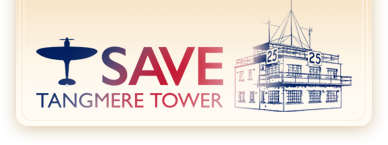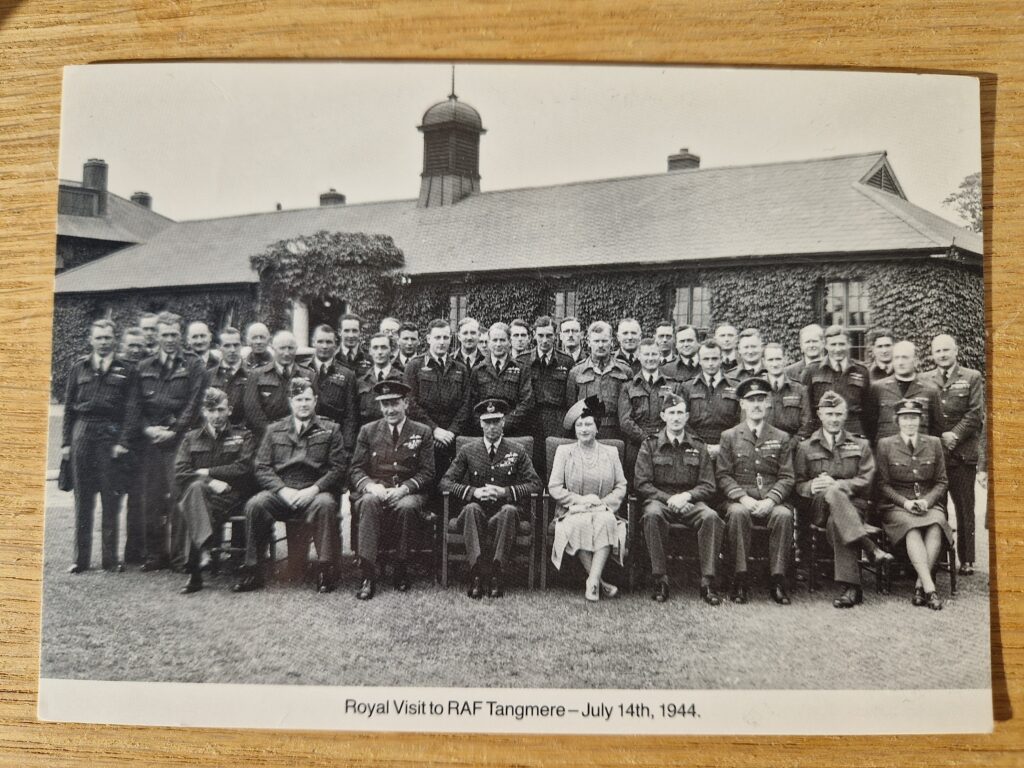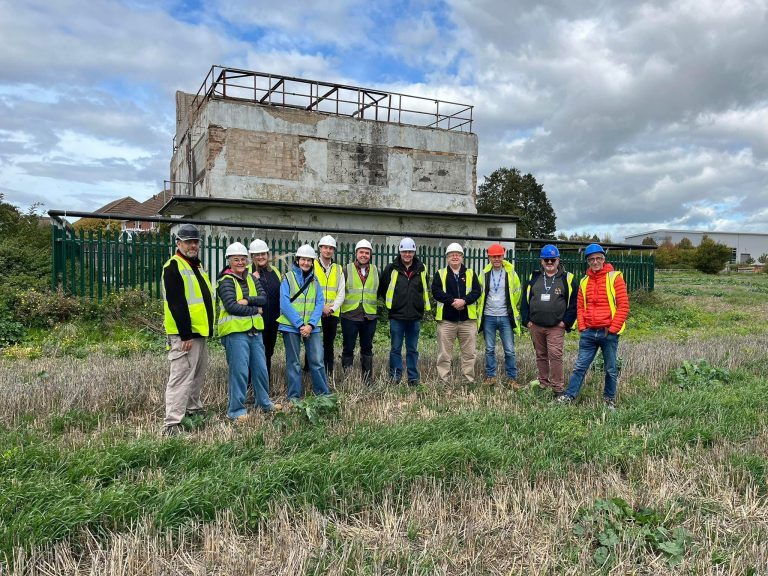By July 1944, RAF Tangmere had played its crucial role in supporting the Allied landings in Normandy during Operation Overlord. Famously, in April 1944, during the run up to D-Day, the station played host to a visit from Dwight Eisenhower, future US President and then Supreme Commander of Allied Forces in Europe. On the anniversary of that visit in 2019, we at the campaign were involved in a recreation of that historic dinner at the Ship hotel.
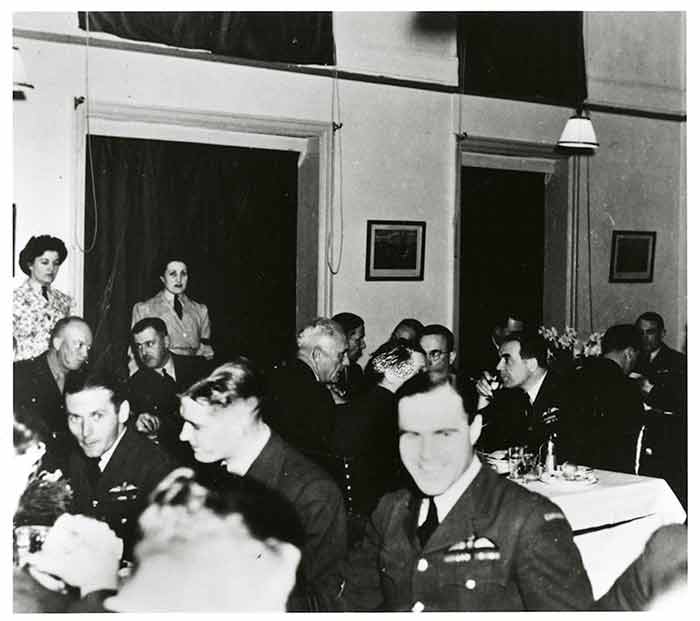
Only a few months later, however, the station would play host to another august visitor.
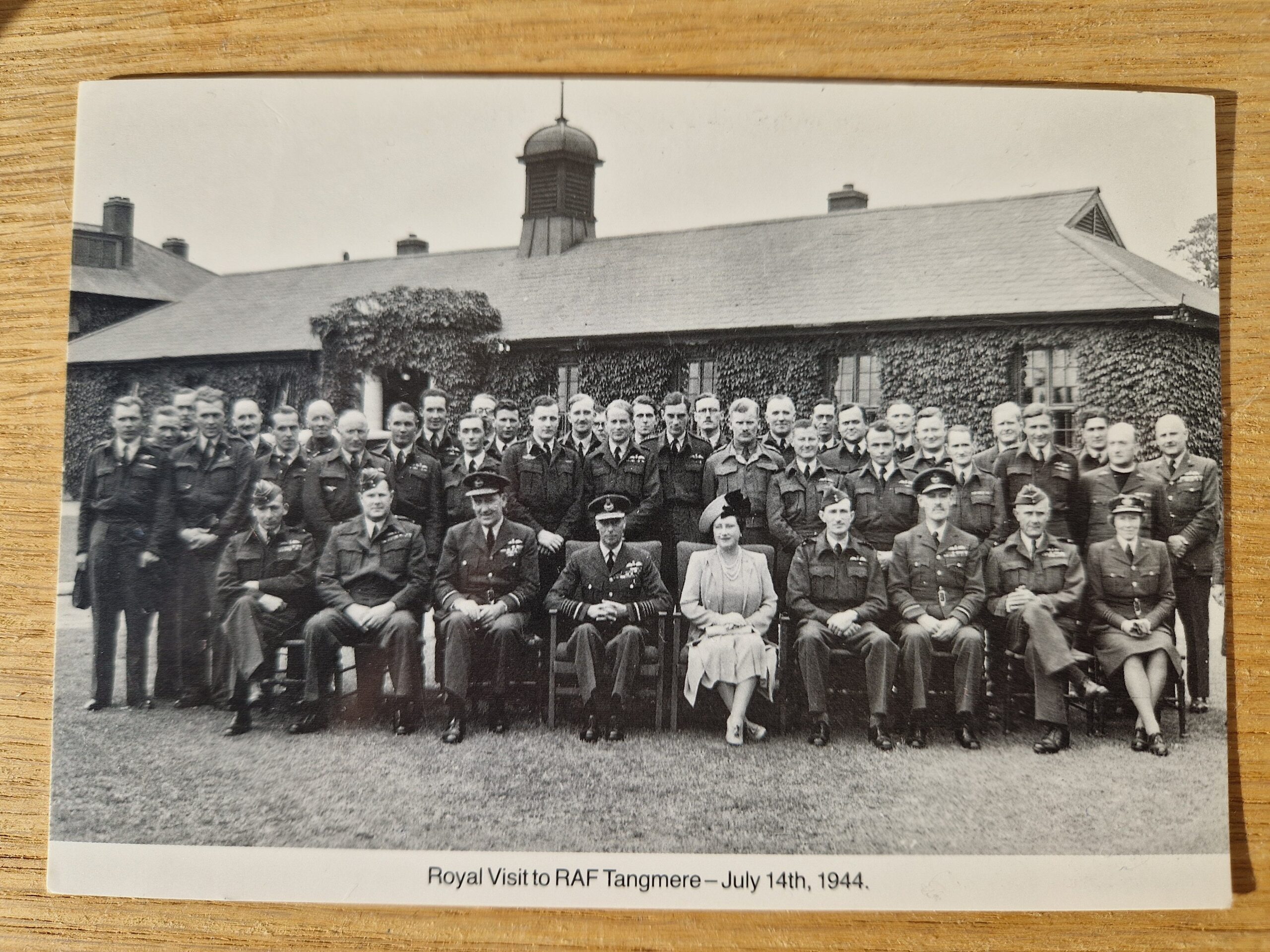
The Tangmere station logbook, quoted in Tangmere: An Authorised History (London: Grub St, 2013) by Reg Byron and David Coxon, related details of the visit:
“14.7.44
Today has been a Red Letter Day in the history of Tangmere. His Majesty the King accompanied by Her Majesty the Queen visited the station. At 11.30 hours they were greeted outside the officers mess by Group Captain W. J. Crisham [the sector commander].
Their Majesties then drove to the perimeter where numerous officers were decorated. After the investiture Their Majesties inspected RAF and WAAF personnel and then visited the dispersals. Lunch was taken in the officers’ mess and the following Tangmere officers were presented to the King:-
W/Cdr Walker
W/Cdr Grice
W/Cdr Wiggins
Lt/Col Jones
S/Ldr Farbrother
The Royal party left the station at 14.00 hours
From an operational point of view it was another very quiet day and there were no operations from Tangmere”
The station’s dramatic role in D-Day had quietened, as the push into Occupied France continued. Nevertheless, this auspicious visit from King George VI and Queen Elizabeth, and the list of RAF officers mentioned in the piece give a useful indication of Tangmere’s important role. In particular, short profiles of three of the officers presented can give us interesting insights.
Group Captain William Joseph Crisham had been appointed station commander at Tangmere in April 1943. He was described as “very friendly Irishman who had a warm personality” in his obituary, which noted the heights to which his career would ascend after the war as Air Vice Marshal, including postings as “Air Officer Commanding Royal Air Force Levant, Middle East Air Forces, and Royal Air Force Germany, 2nd Tactical Air Force.”
W/Cdr Peter Russell Walker had been decorated in 1942 for his part flying in the Dieppe raids, and the Tangmere Station Commander noted: “On August 19th, during the attack on Dieppe, he led two Wing sorties, one of two Squadrons and, finally, one over the returning convoy, comprising five Squadrons. The attention that he gives to his duties as Second in Command of the Sector, and to the training, both in the air and on the ground, of the Day Squadrons under his control, show him to be an officer in keeping with the highest traditions of the Royal Air Force.”
W/Cdr Douglas Hamilton ‘Grubby’ Grice was a Battle of Britain fighter ace credited with 8 aerial victories. He was shot down during combat, crashlanding at seas before being rescued and returned to Felixstowe. He served as Senior Controller at Tangmere until August 1945.
Of the others mentioned, there has been less success. Without first names, it is difficult to find the exact identity (a job for a future blog, perhaps). For W/Cdr Wiggins, Tangmere: An Authorised History (London: Grub St, 2013) by Reg Byron and David Coxon list his initials as DM in the index, which has not yielded any immediate results. At first glance, it looked like a potential match would be with the Australian W/Cdr Albert Lloyd Wiggins. The South Australian Aviation Museum provides this biography noting his extraordinary service as part of RAF Coastal Command, but this had involved him flying on the East coast as recently as 6 July, and he was promoted to Wing Commander in October 1944 (which would make this listing premature). For Lt/Col Jones, the rank suggests he was from the Army rather than the RAF (who retired this rank in 1919, replacing it with Wing Commander), and the relatively common surname rules out any easy identification. Identifying S/Ldr Farbrother has also been a challenge. Another visit to the museum and a search of the archives awaits!
